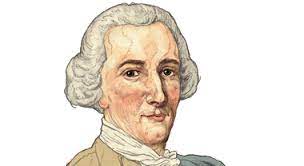Baldassare Galuppi (1706–1785) was an Italian composer and a pivotal figure in the development of opera buffa, the comic opera genre that became immensely popular in the 18th century. Known for his prolific output and innovative style, Galuppi’s music blends the elegance of the Baroque with the emerging Classical style. Below is a list of his ten best compositions, showcasing the range and brilliance of his work.
1. Il filosofo di campagna (The Country Philosopher)
Composed in 1754, Il filosofo di campagna is one of Galuppi’s most celebrated operas. This opera buffa stands out for its witty libretto and lively music, which capture the humor and satire typical of the genre. The work’s overture and arias are particularly admired for their melodic charm and rhythmic vitality.
2. L’inimico delle donne (The Enemy of Women)
Another masterpiece in the opera buffa genre, L’inimico delle donne (1771) is noted for its sophisticated character development and intricate ensembles. The opera showcases Galuppi’s ability to combine comic elements with elegant, expressive music, making it a favorite in 18th-century Venetian theaters.
3. La diavolessa (The She-Devil)
Composed in 1755, La diavolessa is a brilliant example of Galuppi’s operatic style. The opera is filled with lively, engaging melodies and clever musical dialogue between characters. The work’s overture, with its energetic and playful character, is often performed as a standalone concert piece.
4. Concerto in D Major for Harpsichord and Strings
Galuppi’s Concerto in D Major for harpsichord and strings is a shining example of his instrumental music. The concerto features a delightful interplay between the soloist and the orchestra, with elegant themes and virtuosic passages that highlight Galuppi’s skill as a composer of concertos.
5. Dixit Dominus in G Major
This sacred work exemplifies Galuppi’s mastery of choral music. The Dixit Dominus in G Major is characterized by its intricate counterpoint, rich harmonies, and dynamic contrasts, reflecting the influence of the Venetian school of composition. The piece is a powerful example of Galuppi’s contribution to sacred music.
6. La calamita de’ cuori (The Magnet of Hearts)
La calamita de’ cuori, composed in 1752, is an opera that showcases Galuppi’s flair for creating memorable, character-driven music. The opera’s engaging arias and duets are filled with emotional depth and subtle humor, making it one of his most enduring works.
7. Il mondo alla rovescia (The World Upside Down)
Il mondo alla rovescia, composed in 1750, is a comic opera that explores the theme of social inversion. Galuppi’s music in this opera is both playful and sophisticated, with lively rhythms and catchy melodies that capture the whimsical nature of the story. The opera was highly popular in its time and remains a significant part of Galuppi’s legacy.
8. Magnificat in C Major
The Magnificat in C Major is another of Galuppi’s important sacred works. This composition is marked by its graceful melodies and expressive choral writing. The Magnificat highlights Galuppi’s ability to create deeply moving music within the context of liturgical tradition.
9. L’amante di tutte (The Lover of All Women)
Composed in 1760, L’amante di tutte is an opera that exemplifies Galuppi’s mature style. The opera’s intricate arias and duets reflect the composer’s keen sense of drama and his ability to create music that is both entertaining and emotionally resonant. The work is a fine example of Galuppi’s contribution to opera buffa.
10. Piano Sonata No. 5 in C Major
Galuppi’s Piano Sonata No. 5 in C Major is one of his most admired keyboard works. The sonata’s clear structure, graceful themes, and elegant ornamentation reflect the transition from the Baroque to the Classical style. This piece is often performed by pianists who appreciate its balance of technical challenge and expressive depth.
Baldassare Galuppi’s compositions span both the sacred and secular realms, reflecting his versatility and creativity. His operas, in particular, have left an indelible mark on the development of Western music, influencing the evolution of comic opera and inspiring future generations of composers. Whether through his operatic innovations or his beautiful instrumental and sacred works, Galuppi’s music continues to captivate audiences with its wit, elegance, and emotional richness.


Comments are closed